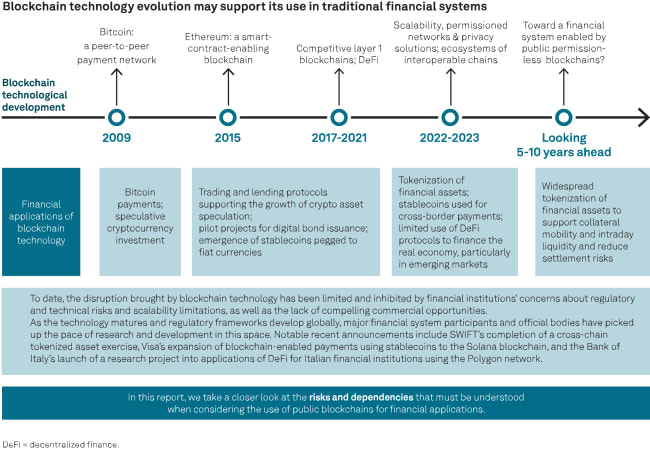Welcome to the next installment of the GoCrypto interview series with Mike Ermolaev, brought to you by GoMining. This time, we feature Andrew O'Neill, Managing Director & Co-Chair of S&P Global’s Digital Assets Research Lab. With an eye on future trends, one of the leading voices in digital asset analysis breaks down complex topics to show how S&P Global aims to navigate and influence the broader adoption and understanding of digital finance. The discussion also includes insights from Cornis Van der Lugt, Senior Manager of ESG Research at S&P Global’s Sustainable1, describing how blockchain technology will revolutionize sustainable energy practices.
Bitcoin's Market Dynamics Post-Halving
Considering the recent Bitcoin halving and varying predictions for its future price, Andrew O'Neill was asked about how S&P Global views the market scenario, especially considering new developments like the introduction of the Runes protocol.
He shared a hopeful yet cautious view on what comes next for the market after Bitcoin's halving. He explains, "On the one hand, the emergence of ETFs in the US has broadened the investor base, and may continue to do so, and broadly this incremental demand has been supportive of price. On the other hand, the BTC price is also driven by overall market liquidity and interest rates, so shifting expectations around rate cuts may put downward pressure on the price."
The Evolution of Blockchain as Infrastructure
In a discussion on the classification of blockchain technology, Andrew was asked to elaborate on his perspective that public permissionless blockchains should be considered as infrastructure rather than intermediaries, a view he had previously expressed on his LinkedIn profile.
Andrew began by clarifying that the opinions expressed in this post represent his personal views and not those of S&P Global. He then described S&P Global's stance on the matter, as articulated in their response to the Basel committee’s consultation on crypto asset standards.
He explains, "In that response, we discuss a point made in their consultation, that stablecoins that use a public permissionless blockchain can never be categorized in the more favorable ‘Group 1’, implying that they would be categorized as ‘group 2’ crypto assets, and therefore treated similarly to exposures to BTC. We believe that this treatment could have disproportionate outcomes for stablecoins that otherwise meet the conditions for categorization in ‘Group 1b’.”
Andrew elaborates on the broader implications of this classification, "Our argument is that a public permissionless blockchain is just a piece of technology that can be used for transactions. Risks related to AML/KYC and permissioning can be addressed at the chain level, such as on private permissioned blockchains, but they may also be addressed at the token or application level, for example."
Balancing Immutability and Privacy
In the realm of blockchain technology, Andrew addresses the critical balance between immutability and privacy concerns. He suggests,
“Technical solutions may well mitigate such risks, for example the use of ZK proofs and validiums. These are still early-stage technologies though so we will see how they develop.”
Expanding on this discussion, Andrew delves deeper into the scalability solutions provided by Layer 2 (L2) technologies, particularly emphasizing their potential in handling permissioning and privacy through ZK-proof technology. Citing the S&P Global report titled "What Can You Trust in a Trustless System?", he notes that while L2 solutions offer significant advancements, they also carry a number of challenges and dependencies that need careful consideration.
Taking a closer look at one of the tricky parts mentioned in the report – when it comes to upgrading roll-up contracts, usually, it’s the core developers who hold all the cards. Certainly, taking advantage of early bug fixes in evolving technology makes sense. It is important to keep in mind, however, that it strings along some dependencies that might cause problems ahead. Additionally, centralized sequencers, the nascent nature of fraud proof mechanisms, and the risks associated with challenge periods pose further risks.
The Promise and Challenges of DAOs
Transitioning from discussing the foundational aspects of blockchain technology, Andrew next addresses another innovative application of these principles within the blockchain ecosystem: Decentralized Autonomous Organizations (DAOs). In his opinion, it is a positive aspect that DAOs encourage everyone to have a say. However, he did point out a couple of obstacles.
"There is a need to balance democratization with expert-led decision-making, as a majority vote may not lead to optimal risk management decisions, for example. Further, change proposals may be very technical in nature, which can lead to low voter participation and effectively result in meaningful concentrations of voting power that may not be transparent," he states.
Blockchain's Impact on Sustainable Energy Practices
The discussion on blockchain's role in the global energy system transition was expertly addressed by Cornis Van der Lugt, ESG Research Senior Manager at Sustainable1, S&P Global's centralized source for sustainability intelligence.
Van der Lugt articulates, “The volume of data created, transmitted and stored in the cloud or on public blockchains continues to grow exponentially. The biggest challenge for blockchain is therefore to improve on the productivity and efficiency with which energy is used. The additional challenge is to accompany efficiency improvements with a transition to using power from renewable energy sources. Some enterprises have made progress towards using renewables to power data centers worldwide, running their servers and cooling systems. Data centers also face risks with respect to availability of water used for cooling purposes and regulatory requirements for dealing with electronic waste.”
He highlighted the promise of blockchain in delivering faster processing of information, enhanced transparency, and greater security and verification capabilities, explaining, “It can facilitate transparent trading of clean energy at a decentralized level, directly between suppliers and buyers. It can establish energy trading platforms that help to mobilize capital for alternative energy projects.”
Additionally, he pointed out that with blockchain smart contracts—similar to catastrophe bonds—coverage for natural disaster damages could become way faster and much more reliable.
Insights for Aspiring Digital Asset Analysts
In conclusion, Andrew O'Neill offered guidance for those looking to enter the field of digital asset analysis. “I would say always hold space for the possibility that you may be wrong on something, and seek out alternative and even opposing views. Be willing to unlearn and relearn,” he advises.
For example, he mentioned that the worlds of traditional finance (TradFi) and cryptocurrency are not as distinct as often perceived. However, he pointed out that the impacts of developments in one sector on the other are not frequently discussed in detail.
“Whether you’re from a TradFi or crypto native background, put in the effort to understand the other side," he encourages.
Disclaimer: This article is provided for informational purposes only. It is not offered or intended to be used as legal, tax, investment, financial, or other advice.





